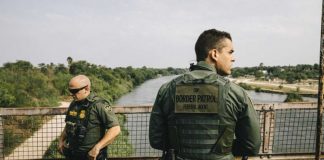The Neverending Story, Frankenweenie, Cocoon
Advertisements:
$400,000
"Everyone can do a character the way they want to do it, unless the director tells them not to, which isn't very common. I like to do my characters, if it's not specific in the script, as myself."
Barret Oliver could have been a major star, if he'd cared to. After starring in The Neverending Story (1984), though, what else is there to prove? The young actor had been the heart and soul of one of the greatest fantasy movies of all time, and by 1990 he simply didn't have the same interest in acting he'd held when he was younger, and he moved on with his life. We can always wonder what might have been, but in his short time as an actor, he created an impressive body of work, and as a photographer he produces some of the most striking portraits ever seen.
The Child Actor
"I didn't start out with a spectacular movie. Many people think you don't have to go from nothing to the top; they think you start at the top."
Born August 24, 1973 in Los Angeles, Barret Oliver got his start, like many young actors, in bit parts. His earliest roles in films like Jekyll and Hyde... Together Again (1982), Kiss Me Goodbye (1982) and Uncommon Valor (1983) had him playing characters like "child in supermarket," "little boy" and "kid #2." Basically, when a movie needed to fill out a birthday party scene, Oliver was one of the young performers they would cast.
That all changed with The Neverending Story, with Barret taking on his first leading role in a major motion picture as Bastian Balthazar Bux. The movie was unusual for a number of reasons. A German-produced English-language film, the movie was the most expensive of its time not produced in the US or the Soviet Union. The production had the cast flying all over the world, being primarily filmed in both Munich and Vancouver, Canada, with some shots being filmed in Almeria, Spain.
Barret Oliver's performance was a standout in a film full of great child actors. The movie instantly propelled the young actor into the spotlight and he had his hands full for the rest of the decade, appearing in at least one film a year between 1984 and 1989, and on several television shows. He followed The Neverending Story with Invitation to Hell (1984), and the Tim Burton short Frankenweenie (1984), where he played a child version of Victor Frankenstein. The next year he won a Saturn Award for his part in D.A.R.Y.L. (1985) as a young android, and acted in Cocoon (1985), then in its sequel, Cocoon: The Return (1988) a few years later. Television parts through the late 80s included The Twilight Zone (1986), and an episode of Tall Tales & Legends (1987) based on the story of Sleepy Hollow.
In 1989, Oliver closed out his acting career with Scenes From The Class Struggle In Beverly Hills (1989). Not a bad film to go out on. It's safe to say that Barret Oliver could have continued his career and eventually been a leading man in adulthood, but he simply had no interest in continuing this career path.
"In D.A.R.Y.L. there was a part where I had to freeze to death, and they didn't even use it. It can get kind of frustrating. But I don't regret that I decided to become an actor. Besides, if I don't like it at any time, I can stop."
The Photographer
When you hear that an actor quit taking parts in order to become a photographer, your first instinct is to assume that they're probably not that good at it, that galleries show their stuff just because the photographer is a celebrity, and not because of their talent. Barret Oliver, on the other hand, is actually just as good behind the camera as in front of it. In fact, when he first became involved in the world of photography, he took on a pseudonym to ensure that his work would be judged on its own merit, and not on its association with a leading child star of the 1980s. This may be one of the reasons why so many rumors circled around the actor through the 90s and 2000s. It turns out he hadn't passed away in a tragic accident or anything like that, he was hiding in plain sight the whole time.
He specializes in Woodburytype and other old-fashioned techniques. To look at his work you'd never guess it was produced in the 2000s and 2010s, rather than the 1900s and 1910s. Oliver's photographs seem to have traveled forward in time from the old west, embracing the stark contrast and grain of older techniques for taking pictures and developing them.
"I like to remind people that these are handmade. If you want it to look like it came out of a machine, go get a machine to make it. Some people don't like the variations and the idiosyncrasies of handmade stuff, and they have an alternative."
In 2007 Oliver released the book A History of the Woodburytype (2007), which, along with his museum and gallery shows, has helped to establish him as a leading authority on the subject. The book has been praised for exploring not only the techniques in play, but the proces by which the camera became the defining artistic medium of the 20th Century, giving birth to mass media, film and television. In fact, Oliver's passion for old-timey photography would eventually bring him full circle back into the movie business, providing his photographs for the film Cold Mountain (2003).
Today Oliver continues to work as a photographer, writing essays and giving lectures on the subject, and shows no interest in stepping in front of the camera again... except, of course, for when he has a great idea for a Woodburytype portrait.
"We forget that photographs are objects as well, and that the way you make something, the materials and the techniques, often have an influence on its meaning."
->





